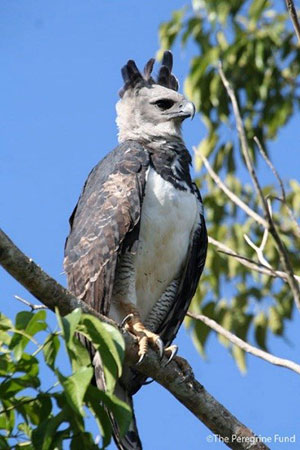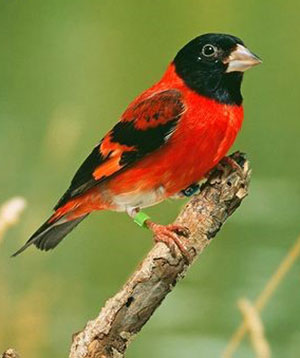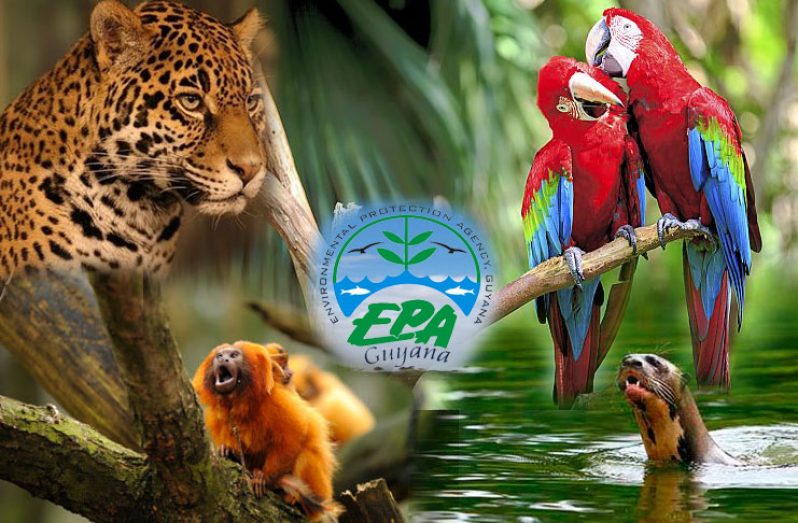Last week, we looked at “Protected Mammals in Guyana”. This week, we will look at “Protected Birds” as we continue to examine Guyana’s rich biodiversity. By doing so, you will learn more about the value of biodiversity to us as people since it provides food, clean water, air and livelihoods. The United Nations has declared 2017 the International Year of Sustainable Tourism for Development and biodiversity is an important part of what attracts tourists to our country.
Why protect birds?
It is common to ask “why protect birds?” Often, talk about bird conservation, wildlife researchers and scientists work to save birds from extinction tend to be just too scientific! While we may be given scientific information to support the need for bird conservation, we are rarely given reasons to which we can easily relate. It is important is to know why bird conservation is important to our life and environment. To start off, here are some good reasons:
– Beauty and interest: Birds are beautiful, they add interest to the natural environment with their bright colors, wide range of shapes and sizes, flight patterns and sounds or bird calls.
– Indicators of change: Birds can indicate changes in the environment e.g. climate change. Any big decrease in the number of birds and change in behavior usually means that something is not right with the environment. Not only do scientists regularly observe birds to tell if there is any danger to the environment, but so do animals in the wild!
– Insect control: Birds play a big role in the control of insect outbreaks. This is particularly important in both forest and urban habitats.
– Pollinators and Seed dispersal: Birds are important pollinators, for example humming birds. Also birds help to spread some trees by eating their fruits and dropping their seeds in a different location.
Not only are birds important predictors of natural disasters, they are also an important part of the food-chain in forest, wetlands, rivers and seas. Many natural predators depend on birds for food, for example, owls, hawks and eagles feed on parrots while birds feed on fruits, insects, fish, worms etc. Birds are needed to maintain our forests, wetlands, savannahs etc. and it is important to ensure that these habitats are in a state that can support birdlife. There is some evidence that maintaining healthy habitats is the most economical approach to protecting birds.
Protected Birds of Guyana
Here are some quick facts at some birds that are under legal protection in Guyana.
HARPY EAGLE (Harpia harpyja)
It is the only member of the genus Harpia harpyja.
It is the largest and most powerful raptor found in the Americas, and among the largest existing species of eagles in the world.
Female Harpy eagles typically weigh 6 to 9 kg (13 to 20 lb) with the male, in comparison, being much smaller and weighs only about 4 to 4.8 kg (8.8 to 10.6 lb).
The harpy eagle is an actively hunting carnivore and is an apex predator.
The plumage of males and females are identical.
SUN PARAKEET (Aratinga solstitialis)
COMMON NAME: ‘THE SUN CONURE’
 Very social birds, typically living in flocks.
Very social birds, typically living in flocks.
Currently threatened by loss of habitat and trapping for plumage or the pet trade and is now listed as endangered by the IUCN.
On average, weighs approximately 110 g (4 oz.) and are around 30 cm (12 in) long.
Young birds form pairs that stay together at about 4 to 5 months of age. Prior to breeding birds are seen feeding and grooming one another. Mating can last up to three minutes, after which pairs become very affectionate with each other.
The face and belly are orange with red around the ears.
RED SISKIN (Carduelis cucullata)
– Found in open country, forest edges and grassland with trees or shrubs. 
– Female lays three greenish-white eggs in a grassy cup nest in a tree.
– Body length is about 10 cm long.
– Male is deep red, with black on the head while the female is grey on the head, breast, and upper parts.
– Bird call is a high-pitched chitter and sharp chi-tit, and the male’s song is a musical goldfinch-like melody with twitters and trills.
– The Siskin has been illegally trapped for the cage-bird trade and endangered by environmental factors.
For a complete list of protected species in Guyana, have a look at the Wildlife Management and Conservation Regulations that can be found on the Agency’s website at www.epaguyana.org.
https://en.wikipedia.org/wiki/
Why save birds?




.jpg)









